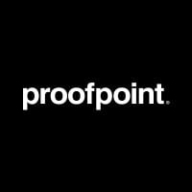

Proofpoint Email Protection and ESET Cloud Apps Protection are competitors in the email security domain. Proofpoint has the upper hand with its comprehensive threat intelligence, while ESET excels in cloud compatibility and straightforward management.
Features: Proofpoint offers comprehensive threat detection, advanced phishing protection, and data loss prevention. ESET provides strong malware defense, seamless integration with cloud services, and efficient workflow management. Proofpoint's strength lies in threat intelligence; ESET focuses on user-friendly management.
Ease of Deployment and Customer Service: Proofpoint is recognized for quick deployment but may require more expertise initially. Its customer service is responsive and offers detailed guidance. ESET deployment is straightforward with minimal complexity, and its customer support is reliable, making it accessible for organizations with limited technical resources.
Pricing and ROI: Proofpoint generally involves a higher upfront cost due to its extensive feature set but offers long-term ROI through effective threat management. ESET offers competitive pricing with strong ROI from efficient cloud integration and cost-effective protection solutions. Proofpoint provides a comprehensive security package; ESET delivers value through cost efficiency and adaptability to cloud-based environments.
| Product | Market Share (%) |
|---|---|
| Proofpoint Email Protection | 7.7% |
| ESET Cloud Apps Protection | 0.6% |
| Other | 91.7% |
| Company Size | Count |
|---|---|
| Small Business | 21 |
| Midsize Enterprise | 13 |
| Large Enterprise | 17 |
ESET PROTECT Complete offers a complete multilayered protection for endpoints, cloud applications & email, the #1 threat vector.
ESET PROTECT Complete is the ultimate cybersecurity solution that offers top-tier endpoint protection against ransomware and zero-day threats, backed by robust data security measures. It employs a sophisticated multilayered approach that combines multiple cutting-edge technologies to strike the perfect balance between performance optimization, threat detection, and minimizing false positives. With automated malware removal and mediation, it ensures uninterrupted business operations by providing advanced protection for data across general servers, network file storage including OneDrive, and multi-purpose servers. This comprehensive package also features powerful native encryption, enhancing data security to meet stringent compliance regulations.
Proofpoint Email Protection provides powerful filtering against spam, phishing, and malware, leveraging effective threat detection and blocking capabilities. This solution integrates smoothly with platforms like Office 365, offering a user-friendly dashboard for seamless operations.
Proofpoint Email Protection focuses on email security, ensuring protection against phishing, malware, and spam. It includes features like URL scanning, anti-phishing, anti-virus protection, and sandboxing for comprehensive threat analysis. Its advanced analytics through TAP and TRAP, along with strong integration abilities, make it appealing for handling email threats. While scalability and ease of deployment are advantages, challenges such as integration in complex environments, the cost, and limited local support require attention. Enhancements in search functionality, email encryption, and improved phishing detection are also needed.
What are the key features of Proofpoint Email Protection?
What benefits and ROI should users look for in reviews?
Industries adopting Proofpoint Email Protection include finance, healthcare, and education sectors, which benefit from its robust email security measures. Educational institutions prioritize safe communication for staff and students, while healthcare organizations focus on protecting sensitive patient data. Financial services benefit from preventing data breaches and fraud through advanced threats management.
We monitor all Email Security reviews to prevent fraudulent reviews and keep review quality high. We do not post reviews by company employees or direct competitors. We validate each review for authenticity via cross-reference with LinkedIn, and personal follow-up with the reviewer when necessary.